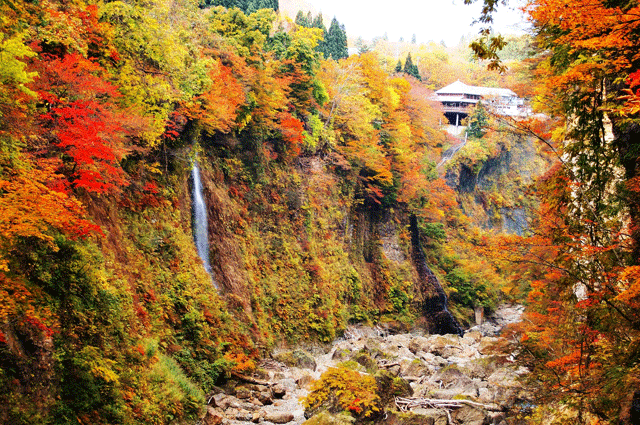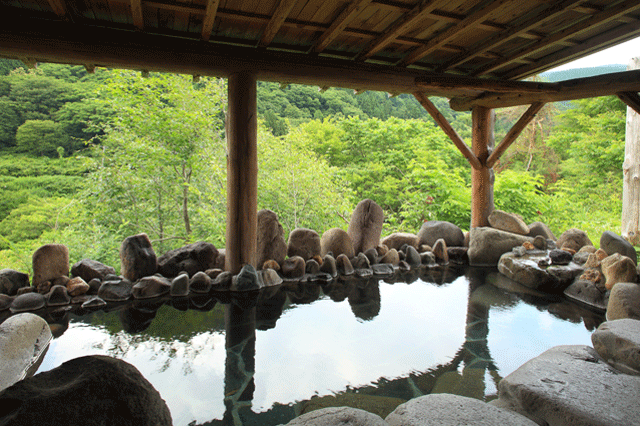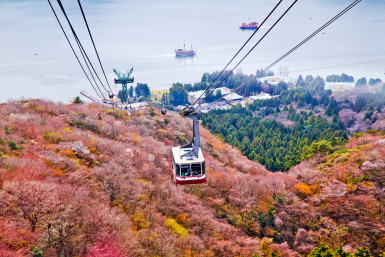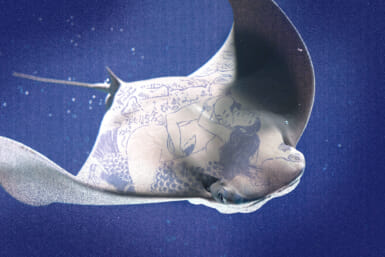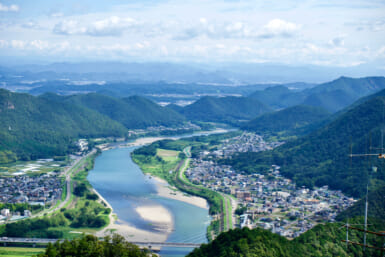A group of Akita locals are looking to share the centuries-old appeal of this onsen city with a new generation.
Located near the staggeringly scenic Kurikoma Quasi-National Park, Yuzawa City benefits from the presence of hot spring waters that fuel a variety of onsen—some just for looking, as their temperatures can run close to boiling, but many others that have made this region a favorite amongst travelers and long-term residents of Japan’s north. Even a brief visit will make it clear why it has been attracting visitors, and legends, for centuries.
For example, one story finds the legendary warrior Minamoto no Yoshitsune and his troops traveling though this deeply northern region—which was once known as the Mutsu, or Michinoku Province—during the Gosannen War, in the late 11th century. While the fabled general was attempting to quell the disturbances within the ancient Kiyohara clan, he was said to have found relief in the warm waters around Yuzawa. Even back then, the area had attracted enough settlers to be cultivating rice at the same levels as they are today. Among those living in the area, the hot springs were a place for villagers and hunters, and later silver mine workers, to escape the cold of those long “snow country” winters. The springs were even said to have a curative effect and as some tales have it, it was a place where animals went to be healed.
Such is the reputation of this spectacular corner of Japan’s main island of Honshu. But Yuzawa (which means ‘hot water marsh’) has an even more flattering addition to its image of possessing magical powers. It also has become known, and “supported” by a report in 1966 by Yuzawa’s own Dr. Sugimoto, for the whiteness, and with it good looks, of the Akita women, who are known as Akita bijin, or Akita’s beauties. In his research, published in the Bungei Shunju magazine, the doctor claimed that the women were blessed with a “beauty that was due to their mixed race (perhaps with the indigenous Emishi people of the north), short daylight hours and the remoteness from other prefectures due to the mountains.” Well, true or not, such impressions take hold on the imagination and the women of the region can still enjoy the reputation of beauty the doctor granted them. But it’s those hot springs and their magical waters, again, which are also said to play their part in this natural “Akita beauty.” So much is this engrained as part of Yuzawa’s identity that the landladies of the local onsen wear a deep blue short winter coat called a hanten, which is known as a symbol of the Akita bijin.
And it’s to these much-admired onsen, or ryokan with onsen, that most visitors will, and should, head in order to really soak up the atmosphere of the region. There are many of these traditional, and luxurious, inns where you can sit in a natural bath that opens out into the forest overlooking a river before enjoying the tasty Akita cuisine, such as its Inaniwa Udon noodles, nabe (traditional hot pot), or even a high-grade wagyu steak, cooked teppanyaki style.
One recently formed group has dedicated itself to continuing this centuries-old tradition of hospitality and relaxation. Made up of the owners of seven different onsen ryokan and one shop, the “Oyasukyo Glamor Girls’ Club” has been finding new ways to appeal to younger women travelers and visitors from overseas.
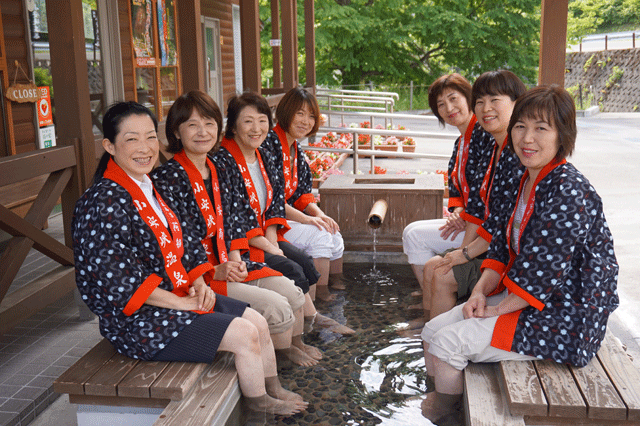
The members of the Oyasukyo Girls’ Glamor Group take a collective dip in an ashiyu, or onsen footbath
Although the group just got off the ground in 2012, they’ve already managed to influence local businesses to create products that will appeal to young women, from a special brand of sake to a new line of sweets. The rise in international tourism to Japan has not been lost on the group either: they have been rapidly bringing their English up to a better level, thanks to the help of a local Canadian friend’s dedication to teaching them English. Tomoko Sato, the chairwoman of the group laughs, as she warns, “we may not become fluent speakers immediately, but the most important thing we want our guests tounderstand is this feeling of hospitality, which truly goes beyond words.”
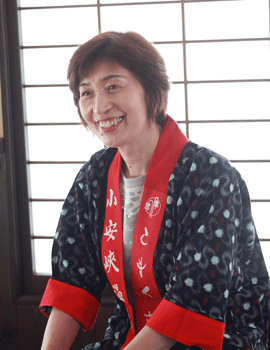
Tomoko Sato, the chairwoman of the group
But, as much as steamy clouds rising from rocks in a ravine and peered over by steep cliffs—and beautiful hot bath accommodation tucked into valleys—are reason for a visit alone, the district around Oyasukyo has a lot more to offer, depending on the season you elect for making your journey north. The four seasons each offer their own unique cultural experiences, for example: in spring, the shidarezakura (weeping cherry trees) of Oshirasama come into bloom, adding a fleeting pink to the region’s varied foliage; the summer’s highlight is the 300-year-old Tanabata celebration that features huge, collectively drawn canvases that decorate the main streets during the early part of August. Mother Nature displays the range of her own palette during autumn, when the maple, beech, and other trees of the region transform the local peaks and ravines into riots of color. Outdoor activities include skiing—even grass skiing if you don’t like it too cold—and hiking along the nearby ravine path, snapping endlessly at the stunning scenery along the way. Finally, nothing is more traditional in winter than a soak in a rotemburo—an outdoor bath—as you gaze out at a snow country landscape. Speaking in the local dialect known as Akita-ben, Sato and the group offer a hearty greeting to those guests who are looking to sample the attractions that have been drawing people to Yuzawa for centuries: Kitanse! (Come on down!)
More information about the Oyasukyo Onsen Girls’ Glamor Group can be found inside the Minase Branch Office for Yuzawa City Tourism.
Tel: 0183-47-5080 | Web: www.oyasukyo.jp
Member businesses of the Group are Shop Oyasu, Matsubakan, Motoyukurabu, Komakusa, Shusen, Kakuhokan, Ootori, and Abe Ryokan
Sponsored Post

